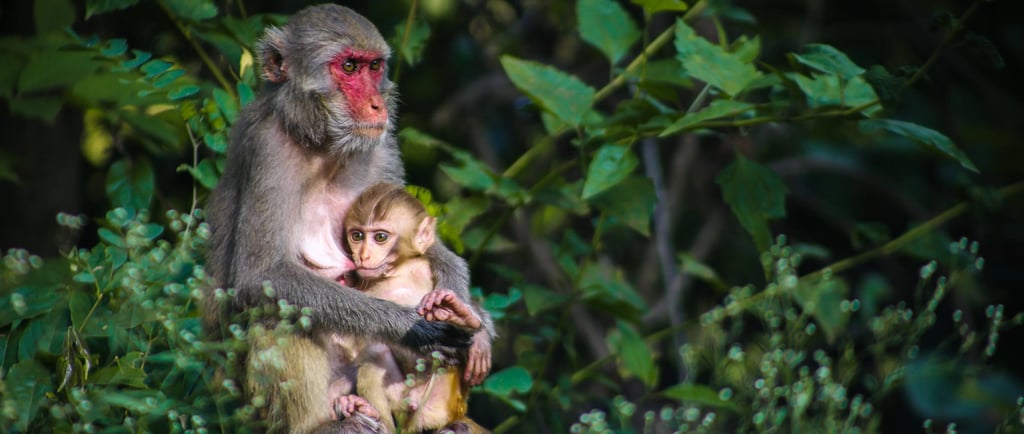The Mysterious South Carolina Island Where 4,000 Monkeys Roam Wild
Morgan Island in South Carolina has 4,000 wild rhesus monkeys that are used for research.
Vicky
6/29/20253 min read


Off the quiet coast of South Carolina exists a place so unusual, it sounds more like a storybook setting than real geography. Welcome to Morgan Island, locally dubbed "Monkey Island" — a remote stretch of land tucked away in the St. Helena Sound where more than 4,000 rhesus macaque monkeys live in the wild.
Unlike any other destination in the U.S., this island is completely off-limits to the public, yet it draws curious eyes from afar.
Why are monkeys living on a remote South Carolina island? And can you actually see them? This guide uncovers the fascinating backstory and what makes Morgan Island a truly one-of-a-kind place on the American map.
Why Are There Monkeys on Morgan Island?
In 1979, the U.S. needed a new home for rhesus monkeys used in medical research after India banned their export. The solution: a quiet island off South Carolina’s coast. Morgan Island was chosen for its isolation, natural habitat, and distance from human communities.
The National Institute of Allergy and Infectious Diseases (NIAID) moved over 1,400 monkeys to the island to create a self-sustaining breeding colony. Today, more than 4,000 monkeys live there under careful oversight. While the animals support research, they aren’t tested on the island itself — they roam freely and are mostly left undisturbed.
Who Manages Morgan Island and Its Monkeys?
Although Morgan Island is uninhabited by humans, it’s far from unmanaged. Two government agencies oversee different aspects of the island’s use and protection.
The South Carolina Department of Natural Resources (SCDNR) owns and manages the island’s land, ensuring the habitat remains preserved and undisturbed by the public.
The monkey colony itself is owned by the National Institute of Allergy and Infectious Diseases (NIAID), a division of the National Institutes of Health (NIH). The agency uses the island as a breeding site for rhesus macaques intended for biomedical research.
Crucially, no scientific research or testing takes place on the island itself. The monkeys live in large, free-roaming social groups and are monitored primarily for health and population control. Occasionally, some are transported to research facilities, but strict ethical and scientific guidelines apply.
The collaboration between state conservation officials and federal health agencies ensures that Morgan Island remains a secure, natural space, free from public intrusion, and vital to both wildlife welfare and human health advancement.
Can You Visit Morgan Island or See the Monkeys?
You can’t step foot on Morgan Island — and that’s by design. Public access is strictly prohibited to protect both the monkeys and the island’s ecosystem. Entering the island is illegal without federal authorization, and violators can face serious penalties.
That said, you can still catch a glimpse of the monkeys — from the water. Since the island lies in the St. Helena Sound, it’s possible to observe the shoreline and sometimes spot the monkeys in the trees or along the edges, especially during low tide. While sightings aren’t guaranteed, they do happen.
The best way to safely and legally view the island is by taking a guided boat tour or kayaking near the coast. Local eco-tour operators near Edisto Island and Beaufort offer private wildlife tours that pass by Morgan Island, giving visitors a respectful, safe, and legal way to experience the mystery from a distance.
Remember: the monkeys are wild and the island is theirs, not ours. Viewing them from afar helps keep the ecosystem undisturbed — and supports ongoing conservation efforts.
How to Safely See Morgan Island — Tours & Travel
Tips
Although public access to Morgan Island is prohibited, you can still view the monkeys legally and responsibly from the water. Here’s how:
Book a Local Eco Tour
The most reliable way to see the island is by joining a guided boat tour. Several operators based near Edisto Island, Fripp Island, and Beaufort, SC offer private wildlife cruises that pass near Morgan Island’s shores. These tours follow safe routes and are led by captains familiar with local regulations and wildlife behavior.
Consider Kayaking
Experienced kayakers may also approach the island by water, launching from nearby areas like Edisto Beach State Park. However, strong tides and changing conditions make this option best suited for those with confidence in open-water paddling. Always keep a respectful distance from the shoreline.
What You’ll See
From the boat or kayak, you may spot monkeys climbing in trees or moving along the edge of the forest. Sightings aren’t guaranteed, but the experience is still unique. For better viewing, bring binoculars or a zoom lens.
Important Reminder
Approaching the island too closely or attempting to land is illegal and harmful to the ecosystem. Always respect boundaries and follow the guidance of your tour operator.
DuoNomadS
Follow us on
© 2025. All rights reserved.
MORE INFORMATION
REACH US